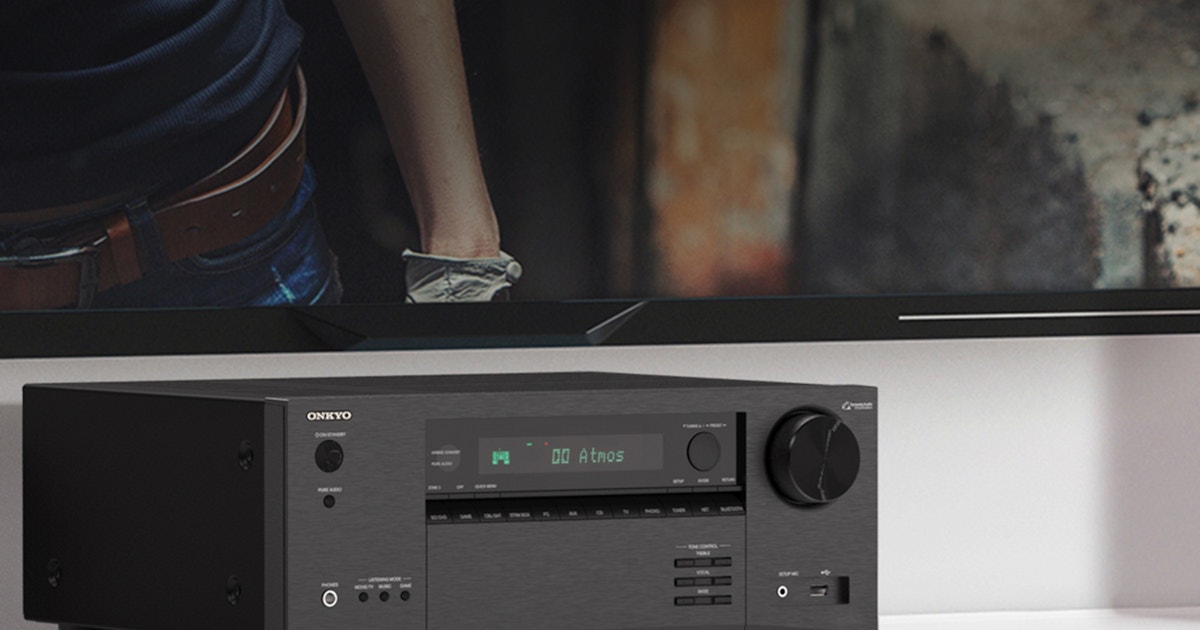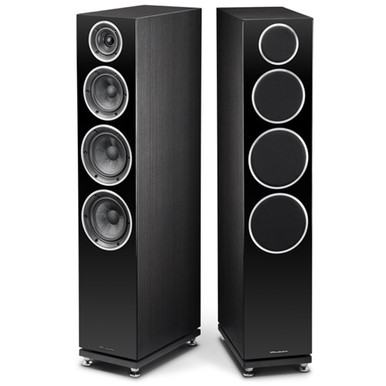Well, there are a few factors--I'll touch on a few
Back in the day when the dinosaurs roamed the earth and the audio shoppe at the mall was just past Sears (who's Sears? ) Us poor souls had to go by a measuring mic and a test CD. Yes, I was one of "those people" that brought in test equipment--the salesmen hated me!
The first thing that can't be EQ'd out is when a speaker has resonable on axis but not off axis. Looks smooth with them pointing at you but goes all sorts of choppy going off axis. You'll see dips 30 degrees off axis at certain frequencies then it goes back up as the woofers/mids/tweets take over. Since off axis sound mixes with on axis sound, that makes a mess of things. You can EQ the off axis dips but the on axis then goes wild. Not a big deal if you are the only person listening but that response gets really bad for say 4 people (or 250 people at a club)
High frequency treble naturally narrows its dispersion as it goes up. You can't stop that, physics won't allow. So, any time you measure off axis you want the response to gently roll off naturally going off axis. If you see wild swings, that is errors from the crossover function, beaming of the drivers, ringing of the drivers themselves etc. I was a chump with a meter and a CD, but that trick worked well when testing car audio drivers on a wall in a treated room. Sure, there is no way a car speaker sitting too low in a door improperly aimed, the person sitting too close to one side than the other while the glass is reflecting everything will ever sound like it does in a store. Not going to happen, so I wiped away my tears and just did a measurement. What other options did I have?
The other thing that can't be EQ'd out is when multiple drivers interact with each other--say the MTM horizontal errors. This creates huge peaks/nulls at narrow bands and the dispersion also narrows radiacally off axis. You can't EQ that out--not going to happen... Dirac won't save you. You can't boost nulls when drivers are canceling each other. If your speaker throws out too wide of dispersion, it bounces off the walls, ceilings, floors and so on and reflecting sound can't be EQ'd out. If the dispersion is too narrow and the crew on the end of the row can't hear the sounds, you can't EQ that out either.
So, after I parked my dinosaur at the mall and picked up my free battery of the month at Radio Shack...I'd have to roll back to the cave and grab some speakers for a gig at the club. New venue, different music...live and recordings at breaks. Take everything and let my ears decide? Nooo...don't have a moving van, not enough time and the audience don't care what I want, it is what they want.
But that is old school stuff from before Y2K was a thing. Sounds like I was a moronic simpleton with a meter, test CD and roaming around speakers in mono but cut me a break! Sure, the cool kids can now have robots do it, they remove the room, give you all the data points so you know if EQ works, show distortion charts, power compression charts, polar charts etc... leave the geezer alone and get off my lawn!
As far as what speakers sound good with classic rock? Define "classic rock". Normally, that could be figured as music from 1964 to 1979 technically....tends to be heavy on the 70's with guitar rock which demands interesting EQ. Back then, they made recordings with natural roll off on the bass end because deep bass will cause records to skip. Since the recording was done for the majority of people that payed the bills (people from 12 to 22 in age was the target) The all-in-one box with speakers was the majority so they rolled off the bass to that spec. You skip a record player with too deep of bass, that is "defective" even if it played with no problem on a good quality record player. The kids are paying the bills so they EQ'd those recordings to make sure the Barbie dream record player did not skip.
I noticed this from the "analog era" so the CDs that had "original masters" on them also tended to have weak bass response. No problem, pull out that EQ magic and boost the very low end to counter that. Had to be careful though, the remastered recordings commonly removed that limitation so paying attention was key. Led Zeppelin remastered theirs and the bass response was returned sooo... yeah. CDs starting in the mid-80's did not castrate the low end because they were not bass limited.
This is just what I noticed when doing "classic rock" gigs... typically, I'd bump up the bass missing in the recordings and also add a bit of "sizzle" (over 8KHz) as cassettes and FM radio tended to roll that off. Also, speakers back in those days tended to be "boom and sizzle" so would be the "classic rock sound" you could say. Just a pondering, but a lot of very popular speakers in the 70's had a bit of boom and sizzle to them.
Too many unknowns though, depends on the recording, what that recording source was and so on. So, I'm lazy and go for accurate then EQ to taste. I did note a huge variation of recording quality in the analog era so EQ would be used to adjust the recording.
Now throwing out a speaker that works with classic rock in any room, any recording, any set of ears? Ethically I can't do that with any hope of being remotely close to the truth. Sure, bump up that bass, maybe a bit more sizzle works for records and FM radio recordings but it has been 45 to 60 years and many of those recordings have been cleaned up, remastered and so on. Hard to believe but some of those remasterings made them worse so even the record companies made a mess of things.
So I developed my own test for what type of classic rocker I'm dealing with. Cue the remasted by Led Zep tune "Kashmir" and watch the person. Put it at a reasonable sound level to start. Normally they would say either "turn it up" or "crank it". Hmmm. OK, they would either sit there...but oddly enough, something weird would happen. You'd either get the "air drummer" or "air guitarist" but either way they usually wanted it loud...not with safe and sound suburban loud...nasty, blow off the roof, in your face, chest thumping loud! The air drummers demanded the chest thumping, very accurate mid-bass loud while the air guitarists demanded very clean mid/lower treble loud. The air drummers really liked the remastered efforts cuz...more bass, lower bass...turn it up...this is the good part.
Can you get that with a pair of 6" bookshelves? Well... as they said in Jaws...gonna need a bigger boat! The air drummers will need a much, much larger boat while the air guitarists can pull it off with a smaller footprint. After all, in the 70's "bookshelf" speakers had a 10 to 12 inch woofer in them...the big coffins were very efficient so had very high peak SPLs even at 25 to 50 watts.
I'd love it if a pair of 6" KEFs could do that but even with unlimited power, unlimited EQ and processors... not going to happen. They don't use those huge systems at concerts as a prop so...if you are an air drummer, consider the size of a kick drum...to move the air a kick drum moves means the woofers will need to move that amount of air. A bunch of subs could do the low end but the actual woofers from your mains also are in the mix.
To give you an idea of what the woofers can do, look at the measurements not only for frequency response but critically, distortion at specific SPL levels. Since voice coils get hot, you then lose output over time so power compression charts are key there. Time is not on your side so it might sound good at Best Buy but over time things can fall apart. The last time I was there, they didn't let me measure power compression cuz.. well... blowing out the store for 30 minutes with my devil music upsets the soccer moms at the i counter.
Here is Kashmir...if you discover you are an air drummer--accept it and pay for that. At the end of the day, you are paying the bills so it is what you want. Big difference if you listen to background music, live in a NYC apartment or a retirement condo though. Me? Well, I cover all the air instruments in the band with the HT. Not loud enough? Amble out to the garage, spark up those arrays, subs, all the fun toys and the meter tells me 116dB/C peaks at the 12 foot listening distance. That suits the demands of most people...well, most of them.
Air drummers still keep asking for more bass... throw them the keys to my sons car and tell them to have at it. Air drummers are the death of me.

 www.crutchfield.com
www.crutchfield.com










